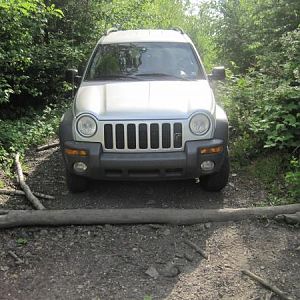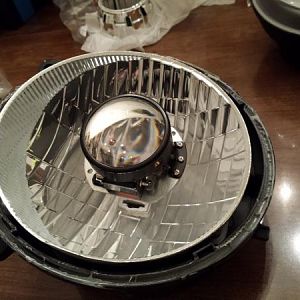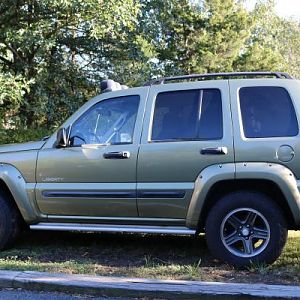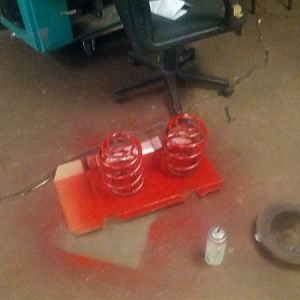alecmesa96
New Member
- Joined
- Mar 2, 2020
- Messages
- 6
- Reaction score
- 1
Happy Monday folks, first time poster here. Got this jeep for free about a year ago and wanted to share a few questions I had regarding a recent repair. As always, I'll start with the story...
Was in my back yard hooking up my boat one night so that I could have everything ready to go out in the morning. Just as I was getting the trailer connected, the engine sputtered and shut off pretty quick. I hopped back in and tried starting it, as expected it just cranked and cranked. After about 15 minutes of waiting, I cranked it again while having my foot all the way to the floor and it just barely caught but it did start up and run on its own. When it started, it ran just fine. While I was cranking, I saw the tach needle go crazy, not all over the place but between 500 and 1500rpm pretty randomly, and it threw a code for the crank sensor. I figured I'd go get a new crank sensor in the morning as I didn't want it to leave me stranded in the middle of some road with my boat attached. I parked it in my driveway and shut it off.
Next morning got up early went to NAPA and got a crank sensor. I know I should have gone Mopar for this sensor but I was in a rush and didn't have time to wait since I was selling the boat that day and planned to meet someone. Got home and tried starting the truck to get it in the garage, wouldn't even crank. Had plenty of power but the starter would not engage so I just pushed it into the garage. Jacked up the truck, disconnected the sensor and removed the bolt. Found that it was stuck pretty good, so I got a vise grips on it with some PB blaster however it still snapped off in the block. I said screw it and it has been sitting all winter as I haven't really had the time to get it out due to my college class schedule.
Yesterday was a pretty nice day for us in southeastern Wisconsin (53 degrees) so I decided to go out and start hacking away. I pulled the passenger side cat converter so I had plenty of room, then drilled a hole in the old sensor. I put a big screw in it along with a washer, got a crowbar and gave it hell, came right out with the help of more PB blaster.
After installing the new sensor but before installing the passenger side cat and connecting the O2 sensors, I put the battery in and decided to give it a go to see if anything had changed. Still would not crank via the key. I got it to crank by removing the starter relay and jumping the terminals. It cranked just fine, saw the tach creep up a little when cranking so I'm guessing the new sensor is working, but still no start. Won't even try to fire and I don't smell any fuel whatsoever so I'm assuming that the injectors are not firing. Plenty of fuel pressure at the rail. I have not gotten the chance to test for spark as I figured it was pointless since it was pretty obvious that I have no fuel.
My question is...what now? Should I just get a Mopar sensor and replace it again? I'm thinking the no-crank problem may be related. I don't know anything about Chrysler products as I mainly work on heavy equipment. Any guidance here would be greatly appreciated.
Was in my back yard hooking up my boat one night so that I could have everything ready to go out in the morning. Just as I was getting the trailer connected, the engine sputtered and shut off pretty quick. I hopped back in and tried starting it, as expected it just cranked and cranked. After about 15 minutes of waiting, I cranked it again while having my foot all the way to the floor and it just barely caught but it did start up and run on its own. When it started, it ran just fine. While I was cranking, I saw the tach needle go crazy, not all over the place but between 500 and 1500rpm pretty randomly, and it threw a code for the crank sensor. I figured I'd go get a new crank sensor in the morning as I didn't want it to leave me stranded in the middle of some road with my boat attached. I parked it in my driveway and shut it off.
Next morning got up early went to NAPA and got a crank sensor. I know I should have gone Mopar for this sensor but I was in a rush and didn't have time to wait since I was selling the boat that day and planned to meet someone. Got home and tried starting the truck to get it in the garage, wouldn't even crank. Had plenty of power but the starter would not engage so I just pushed it into the garage. Jacked up the truck, disconnected the sensor and removed the bolt. Found that it was stuck pretty good, so I got a vise grips on it with some PB blaster however it still snapped off in the block. I said screw it and it has been sitting all winter as I haven't really had the time to get it out due to my college class schedule.
Yesterday was a pretty nice day for us in southeastern Wisconsin (53 degrees) so I decided to go out and start hacking away. I pulled the passenger side cat converter so I had plenty of room, then drilled a hole in the old sensor. I put a big screw in it along with a washer, got a crowbar and gave it hell, came right out with the help of more PB blaster.
After installing the new sensor but before installing the passenger side cat and connecting the O2 sensors, I put the battery in and decided to give it a go to see if anything had changed. Still would not crank via the key. I got it to crank by removing the starter relay and jumping the terminals. It cranked just fine, saw the tach creep up a little when cranking so I'm guessing the new sensor is working, but still no start. Won't even try to fire and I don't smell any fuel whatsoever so I'm assuming that the injectors are not firing. Plenty of fuel pressure at the rail. I have not gotten the chance to test for spark as I figured it was pointless since it was pretty obvious that I have no fuel.
My question is...what now? Should I just get a Mopar sensor and replace it again? I'm thinking the no-crank problem may be related. I don't know anything about Chrysler products as I mainly work on heavy equipment. Any guidance here would be greatly appreciated.










